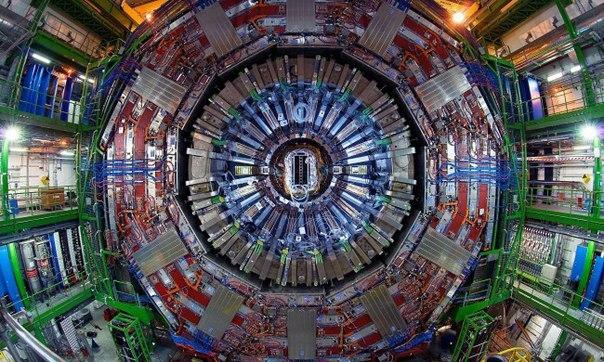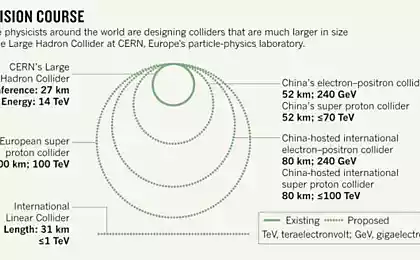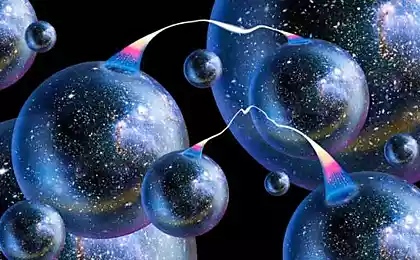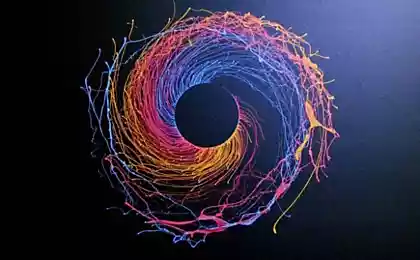506
The large hadron Collider has dealt another blow to the theory of supersymmetry
The theory of supersymmetry has received another blow from the Large hadron Collider (LHC). New data of high-speed collisions of protons introduced new evidence of subatomic activities which are consistent with the Standard model of particle physics.
To understand the importance of these results, it is necessary to go back to the basics. As we know, the Standard model describes the elementary particles that make up the Universe, and their interaction. Currently, it is one of the best descriptions of the subatomic world, in accordance with CERN, which, however, has several gaps. It can't describe gravity, does not explain the existence of dark matter and can not predict the Higgs boson mass.
The Standard models are created add-ons, but scientists are continuously looking for discrepancies within it that may point towards new physics. The theory of supersymmetry is one of the best candidates to replace CM. "Supersymmetry predicts that every particle in the Standard model has a so-called superpartners that could solve a lot of problems. For example, from particles superpartners could be dark matter," says William Sutcliffe, Ph. D. Imperial College, London.

Sutcliffe became a major international team of scientists, who observed the behavior of quarks, the subatomic particles that make up protons and neutrons. There are six different types of quarks: top, bottom, charmed, strange, wonderful and true. Scientists are particularly watched the beautiful quark, which is heavier and is able to change form. Charming quark usually goes into a charmed quark, but in rare cases can turn into top quark.
"We have studied the transition of the charming quark to the top quark, earlier in the transition were some discrepancies that pointed to the right-hand orbital motion of the quark. This could be an extension to the Standard model, explains Sutcliffe. Right — sided orbital motion could explain the theory of supersymmetry".
The findings, published in the journal Nature Physics, the measurements showed no right-hand rotation. Eventually the scientists got the result which was in accordance with the Standard model: beauty quark decays only to the top quark, if it has a left spin. This is a blow to supersymmetry, which, however, relieves the theory from the accounts. And the fact that scientists have been able to do such measurements (and earlier they seemed to be too difficult), is impressive.
"It was quite difficult to measure the transition charming quark to the top quark. It's like looking for a needle in a haystack," says Sutcliffe. published by P. S. And remember, just changing your mind — together we change the world! ©
Source: vk.com/wiki_inventions?w=wall-56414092_23649
To understand the importance of these results, it is necessary to go back to the basics. As we know, the Standard model describes the elementary particles that make up the Universe, and their interaction. Currently, it is one of the best descriptions of the subatomic world, in accordance with CERN, which, however, has several gaps. It can't describe gravity, does not explain the existence of dark matter and can not predict the Higgs boson mass.
The Standard models are created add-ons, but scientists are continuously looking for discrepancies within it that may point towards new physics. The theory of supersymmetry is one of the best candidates to replace CM. "Supersymmetry predicts that every particle in the Standard model has a so-called superpartners that could solve a lot of problems. For example, from particles superpartners could be dark matter," says William Sutcliffe, Ph. D. Imperial College, London.

Sutcliffe became a major international team of scientists, who observed the behavior of quarks, the subatomic particles that make up protons and neutrons. There are six different types of quarks: top, bottom, charmed, strange, wonderful and true. Scientists are particularly watched the beautiful quark, which is heavier and is able to change form. Charming quark usually goes into a charmed quark, but in rare cases can turn into top quark.
"We have studied the transition of the charming quark to the top quark, earlier in the transition were some discrepancies that pointed to the right-hand orbital motion of the quark. This could be an extension to the Standard model, explains Sutcliffe. Right — sided orbital motion could explain the theory of supersymmetry".
The findings, published in the journal Nature Physics, the measurements showed no right-hand rotation. Eventually the scientists got the result which was in accordance with the Standard model: beauty quark decays only to the top quark, if it has a left spin. This is a blow to supersymmetry, which, however, relieves the theory from the accounts. And the fact that scientists have been able to do such measurements (and earlier they seemed to be too difficult), is impressive.
"It was quite difficult to measure the transition charming quark to the top quark. It's like looking for a needle in a haystack," says Sutcliffe. published by P. S. And remember, just changing your mind — together we change the world! ©
Source: vk.com/wiki_inventions?w=wall-56414092_23649























